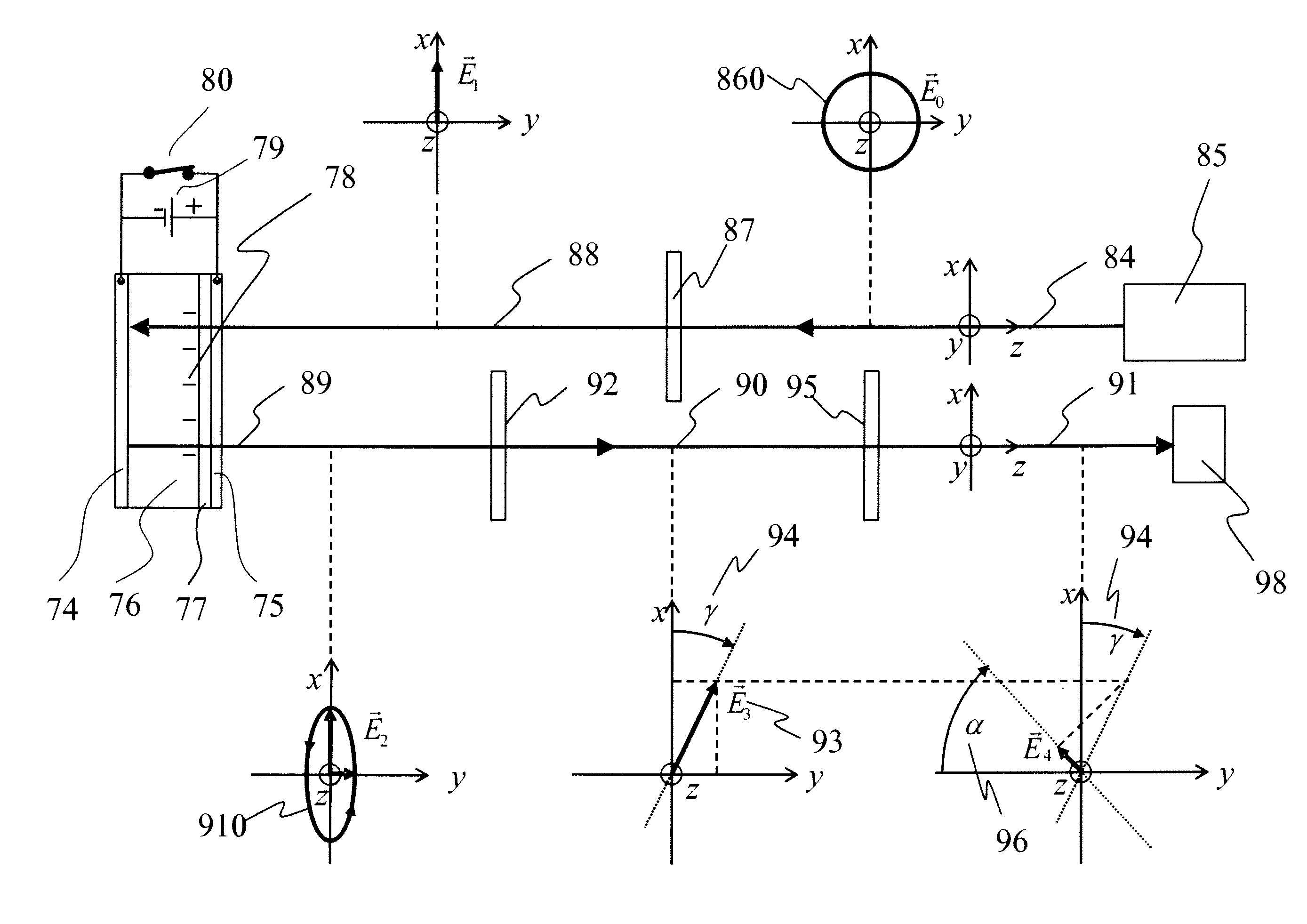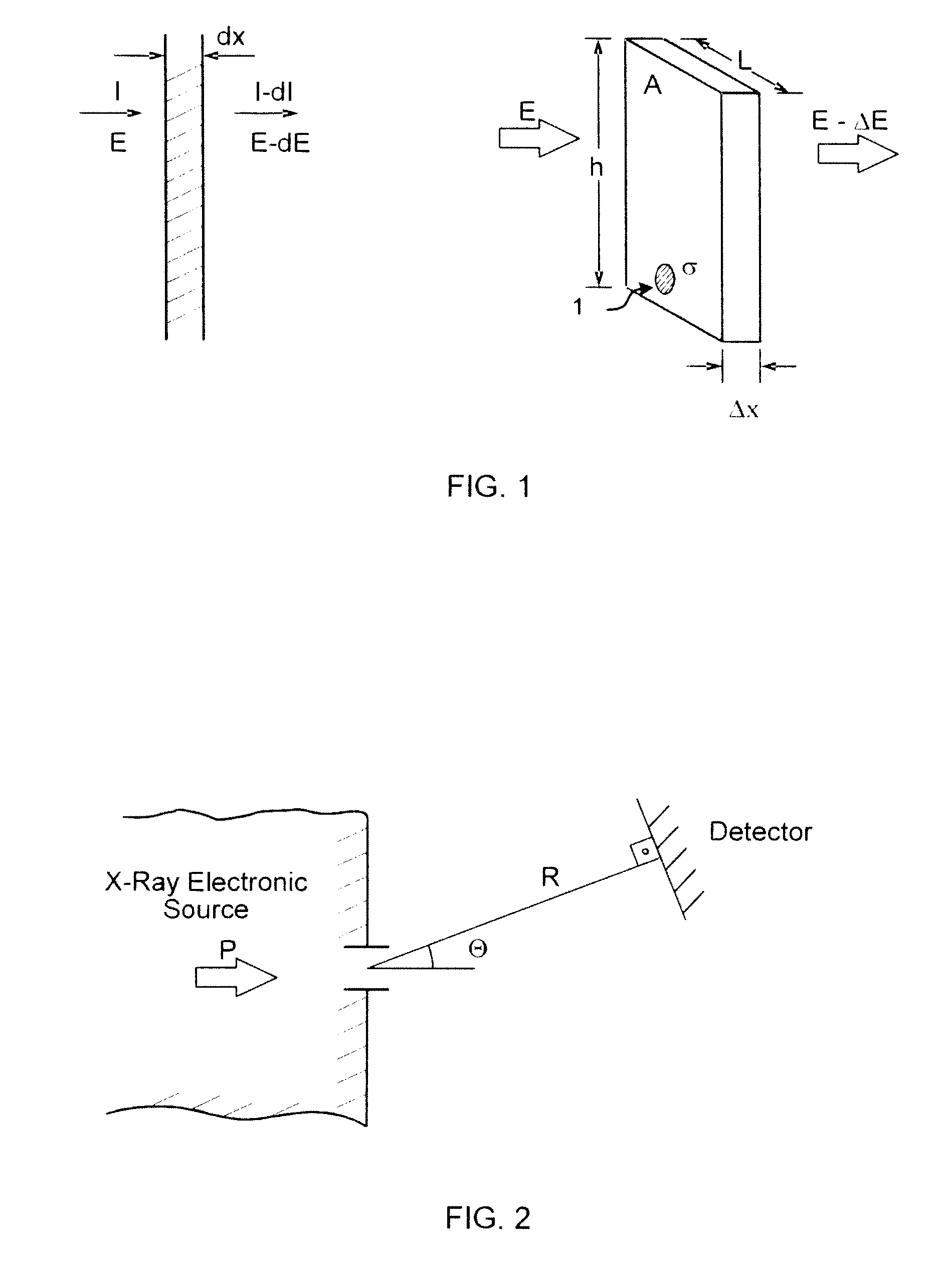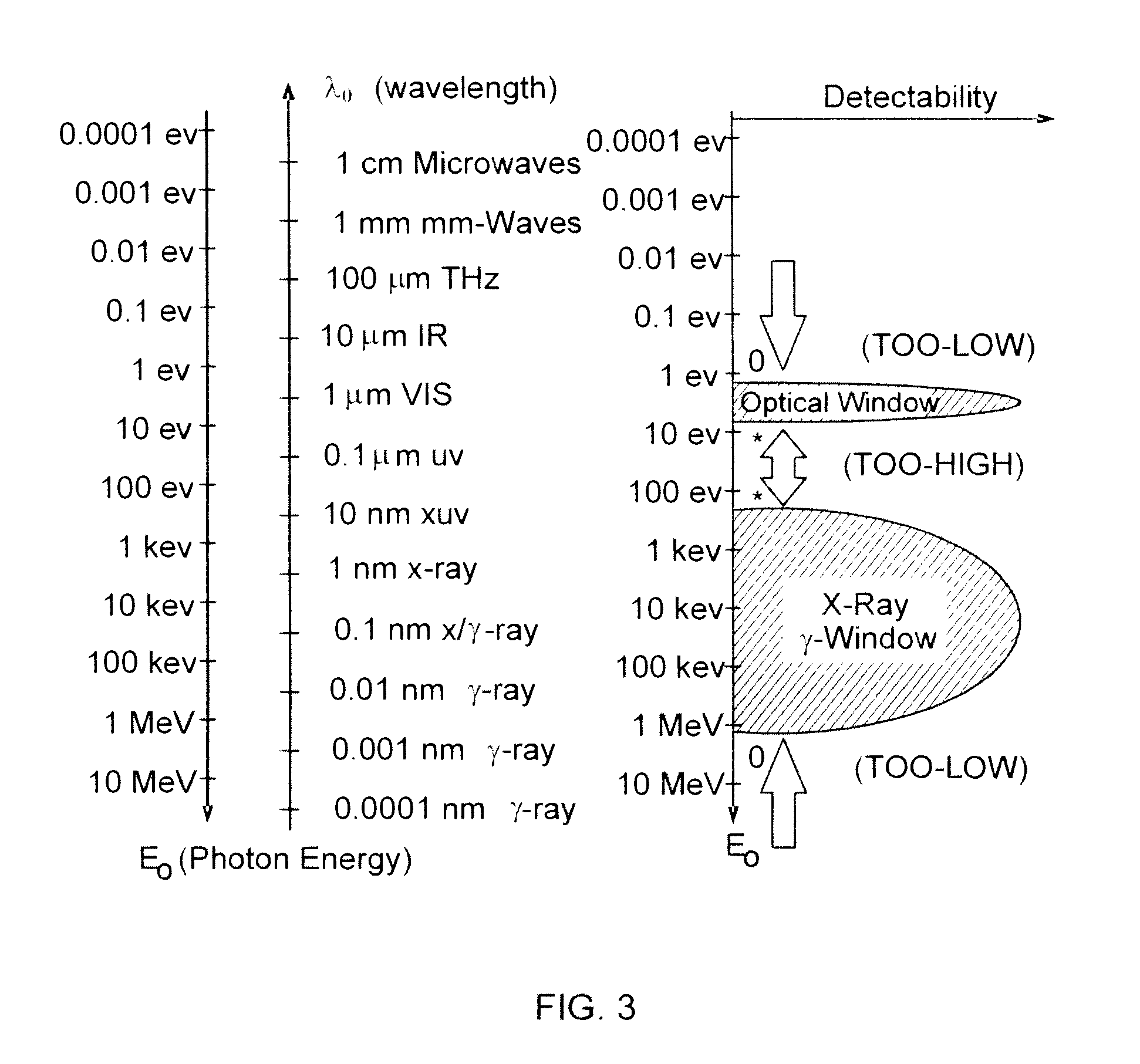Quantum-imaging system and mode of operation and method of fabrication thereof
a quantum imaging and quantum-imaging technology, applied in the field of radiation detection, can solve the problems of high noise and cross-talk effect, over-complexity, and inability to operate at cryogenic temperatures, and achieve high selectivity, high energy resolution of isotopic lines, and high precision of relative photon flux measurement
- Summary
- Abstract
- Description
- Claims
- Application Information
AI Technical Summary
Benefits of technology
Problems solved by technology
Method used
Image
Examples
Embodiment Construction
[0041]According to various embodiments of the invention, a quantum-imaging system for detecting photons, including short-wavelength (2) for both strong beams and weak beams, the latter ones in the intensity range of 1 pJ / cm2·sec, or 0.1 μSv / h. The quantum-imaging system can also function as a photon spectrometer because it can measure photon energies with high energy resolution such as, for example, 1% of photon energy.
[0042]The quantum-imaging system can be configured as an optical read-out system that measures secondary electron clouds generated by a primary photon, transferred into a spatial pattern. In one embodiment, the spatial pattern formed by the secondary electron cloud is read and transmitted by an optical read-out beam. In contrast to electronic-readout systems, which require complex pixel / electrode structure to measure photon energy, a quantum-imaging system using an optical read-out can be configured to measure short-wavelength photons while avoiding this complex pixel...
PUM
 Login to View More
Login to View More Abstract
Description
Claims
Application Information
 Login to View More
Login to View More - R&D
- Intellectual Property
- Life Sciences
- Materials
- Tech Scout
- Unparalleled Data Quality
- Higher Quality Content
- 60% Fewer Hallucinations
Browse by: Latest US Patents, China's latest patents, Technical Efficacy Thesaurus, Application Domain, Technology Topic, Popular Technical Reports.
© 2025 PatSnap. All rights reserved.Legal|Privacy policy|Modern Slavery Act Transparency Statement|Sitemap|About US| Contact US: help@patsnap.com



